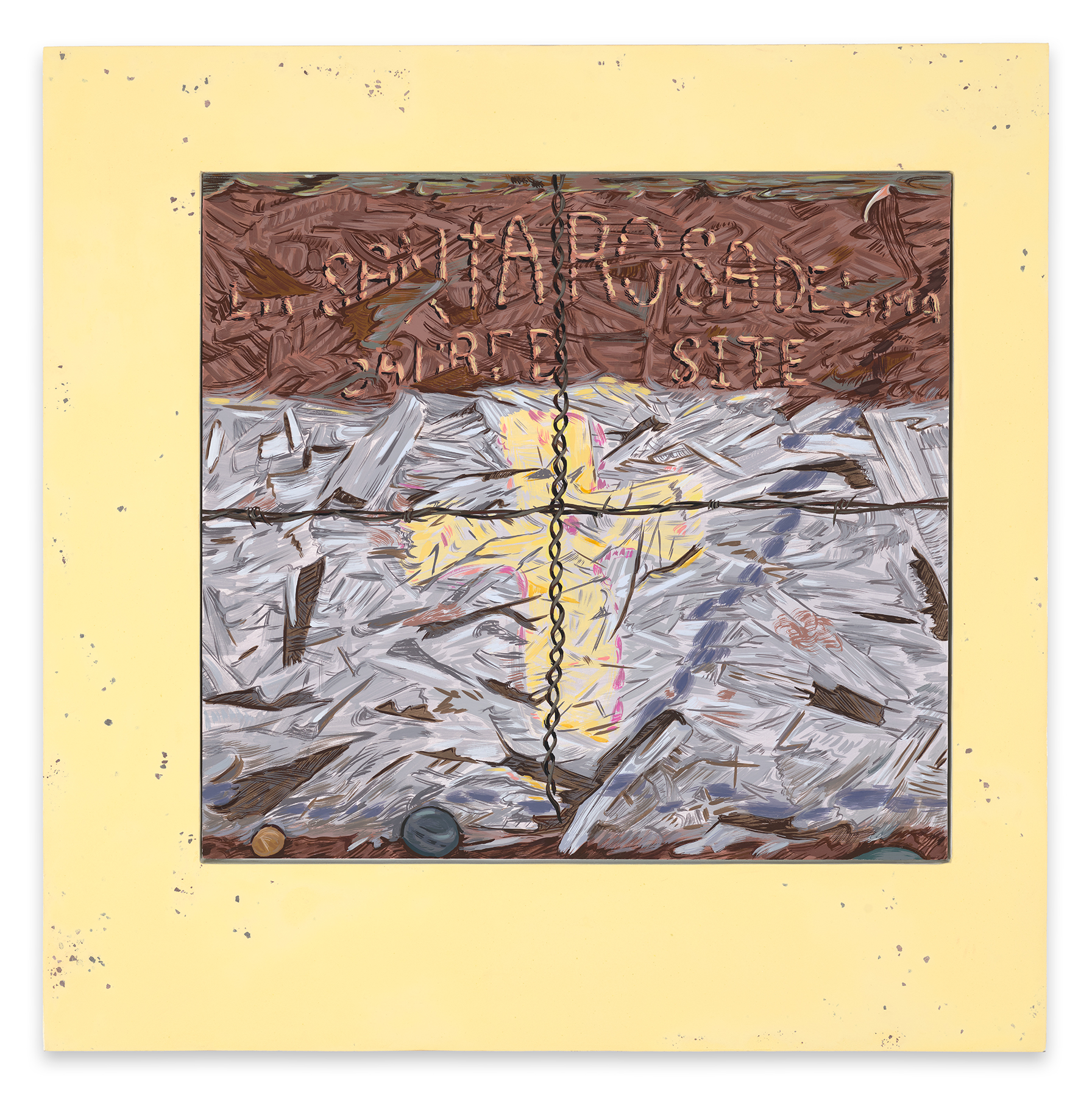Sacred Site Sign
| Artist | Josephine Halvorson |
| Year | 2020 |
| Dimensions | 32 x 32 inches (81.3 x 81.3 cm) |
| Medium | Gouache and site material on panels |
| Credit | Courtesy of the artist and Sikkema Jenkins & Co., New York |
Santa Rosa de Lima, near the present-day town of Abiquiú, was settled by the Spanish in the eighteenth century, and abandoned in the 1930s—around the time when O’Keeffe first settled in New Mexico, and began painting the crosses she encountered in the landscape. Today, the ghost town of Santa Rosa de Lima includes the substantial ruins of an adobe church, which the illusionistically painted sign in this work designates.
